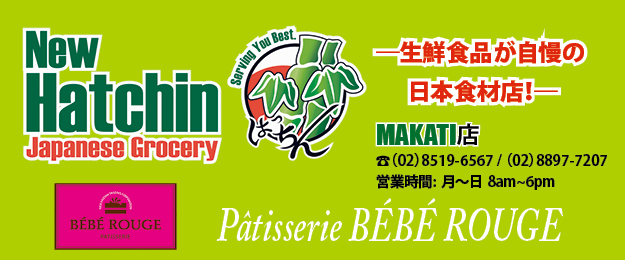コメの年間消費量は、日本では1人当たり51.1キログラム(2023年度概算/農林水産省)に対し、フィリピンは実に151.3キログラム(2024年推定値/米国農務省)。この数字を「コメへの愛情」とするならば、日本はフィリピンに圧倒されています。しかし主食であるコメへのこだわりでは、決して負けていません。例えば、海外の日本料理店で「日本のコメを使っているかどうか」を気にするのは、やはりコメへのこだわりの現れでしょう。フィリピンにはフィリピンのコメがありますが、日本人としてはやはり日本で親しんできたコメを食べたくなるもの。そんな日本人の思いを汲み取ってくれたかのように、フィリピンで日本のコメを生産してきたのがグリーンハイツ・アグリカルチュラル社です。同社のマイケル・アンソニー・マパ社長に聞きました。
While Japan consumes 51.1 kilograms of rice per capita per year (FY2023, Ministry of Agriculture, Forestry and Fisheries of Japan), the Philippines consumes a whopping 151.3 kilograms (2024, U.S. Department of Agriculture). If these figures are to be taken as “love for rice,” Japan has been overwhelmed, but that doesn’t take away the country’s commitment to having this crop as a staple food. For example, when locals visit Japanese restaurants abroad, they can always tell if Japanese rice is used or not. Their commitment is the same no matter where they go. In the Philippines, Green Heights Agricultural Corporation understands the wishes of Japanese people which is why they have been producing Japanese rice in the country along with other Japanese goods throughout the years. In this issue, Navi Manila interviews the president of this company, Mr. Michael Anthony Mapa.
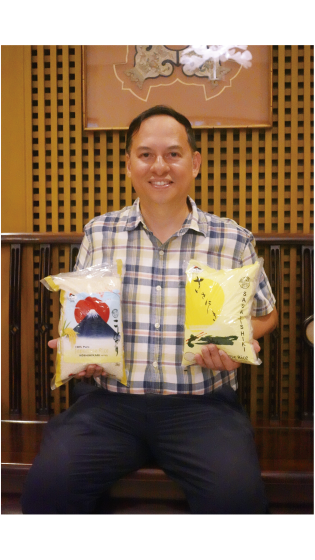
マイケル・アンソニー・マパさん
グリーンハイツ・アグリカルチュラル・コーポレーション社長
コンサルタント会社勤務を経て、父親が創業した日本米生産とさつま揚げ製造会社を2018年に引き継ぎ、弟、妹とともに運営する。デラサール大学卒業、INSEAD(フランス)経営学修士(MBA)。JALスカラシッププログラム、東南アジア青年の船に参加経験があり、ビジネス、観光を含めて日本への渡航は20回以上。趣味はボードゲーム。
「MBAで学んだことや経営コンサルティングの経験は、会社経営においてマーケティング、生産、財務での問題に直面したときに役立っています。しかし、フィリピンの農業については、高度な文献や洗練されたビジネスモデルからではなく、実際の経験から学ぶ要素が非常に多い。父は父の時代、そして私と弟は私たちの時代に合った日本の農業の最善の方法を取り入れ、いかに私たちの農業をアップグレードできるか常に考えています」
Mr. Michael Anthony G. Mapa
President, Green Heights Agricultural Corp.
After working for a consulting firm, he took over his father’s Japanese rice production and satsuma-age fishcake manufacturing company in 2018 which he runs with his younger brother and sister. He is a graduate of De La Salle University where he participated in the JAL Scholarship Program and the Southeast Asian Youth Ship, and holds an MBA from INSEAD (France). He has traveled to Japan over 20 times for business and leisure while also being an avid board game collector and player.
“My experience as a consultant helps me with running the company in some ways;
the management consulting experience as well as lessons learned in my MBA have helped me think about challenges we face in marketing, production, and finance. Despite this, there are so many elements of Philippine agriculture that one does not learn about from high-level books or sophisticated business models, but from actual operational experience. Some practices are helpful; others are not, my father in his time and my brother and I in ours, are always trying to see how we can upgrade our processes, especially by incorporating the best Japanese agricultural practices.”
フィリピンの農場で育った
日本のコメの出来栄え
父は1970年代に沖縄で米軍の放出品を扱うビジネスをしていて、ウラサキ・チョクシンさんという日本人と知り合いました。その後、父とウラサキさんがマニラで最初のカラオケパブを始め、ウラサキさんはマニラで最初の日本料理店の一つである「ハカタ・レストラン」に投資していました。
70年代後期に父とウラサキさんはさつま揚げの製造を始め、父は東ネグロス州カンラオン市の農場で日本米の生産も始めました。そして現在に至るまで同じ農場でコシヒカリとササニシキを「マウントフジ・ライス」として、マカティの工場で製造するさつま揚げを「かまぼこ」ブランドで食材店などに卸しています。さつま揚げは、当社では創業以来、フィリピンで獲れる白身魚であるダラガン・ブキ(和名ユメウメイロの一種)を使うことにこだわっています。
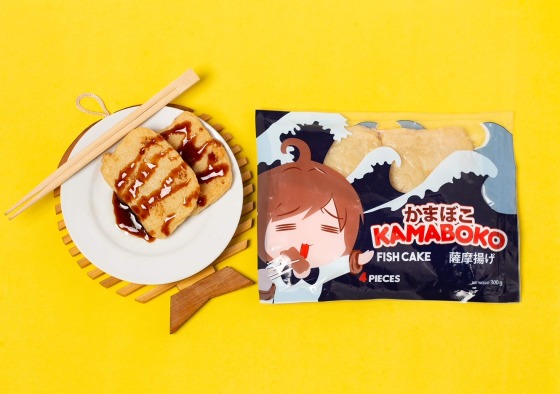
カマボコのブランドのさつま揚げ Satsuma-age, Japanese fishcake(Photo: Green Heights Agricultural Corp.)
当初、日本米の生産では日本の国際NGOオイスカの技術者による農業研修の支援を受けました。当社の農場では日本で買ってきた農業機械を使い、始業時にはラジオ体操をするのが日課。日本とは異なる気候と土壌で育ったコシヒカリ、ササニシキは粒の大きさはやや小さく、日本よりもヘクタールごとの収獲率は低いものの、ツヤや粘り気は日本のものと遜色ないと思います。
自然が相手のビジネスゆえに、苦労はいろいろあります。昨年12月には、ネグロス島のカンラオン火山の噴火によって農場の一部が火山灰に覆われて、収獲量は減りました。しかし、すべての収穫は新しい始まりでもあり、次はよりよい収獲となることを期待しています。
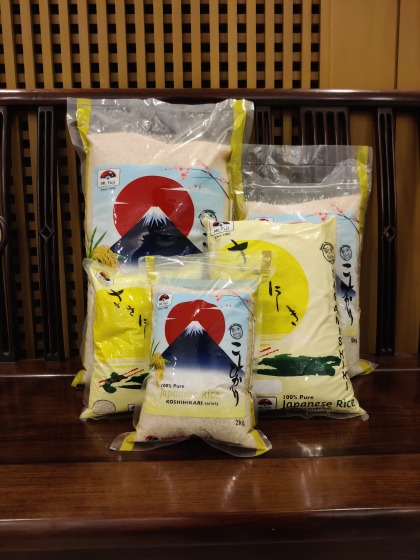
紅あずまに出会い
サツマイモの生産開始
これら日本米、さつま揚げに加えて、2020年からは日本のサツマイモの生産を始めました。茨城県で紅あずまに出会い、そのおいしさに感動してフィリピンでつくってみようと思ったんです。ご存じの通り、フィリピンにもスイートポテト、カモテがありますが、日本のサツマイモはより甘くてクリーミー。日本の大学いもは、フィリピンでも人気が出るのではないでしょうか。フィリピンのカモテを使ったスイーツ、カモテキューもおいしいですが、大学いもは味わいが深く、口でとけるようななめらかさがありますね。
今はマニラに日本料理店がたくさんあり、多くの地元客でにぎわっています。このような状況は、私にとっては特に驚くことではなく、予期していたこと。日本料理にとってすばらしいことだと思っています。
当社の強みは、日本のコメやサツマイモをフィリピンで生産することによって、新鮮なまま皆様にお届けできることです。これからも顧客が求めているものを把握し、皆さんのよりよい食生活をサポートし続けたい。そして、フィリピン人の食への好奇心をより広げていきたいと思っています。
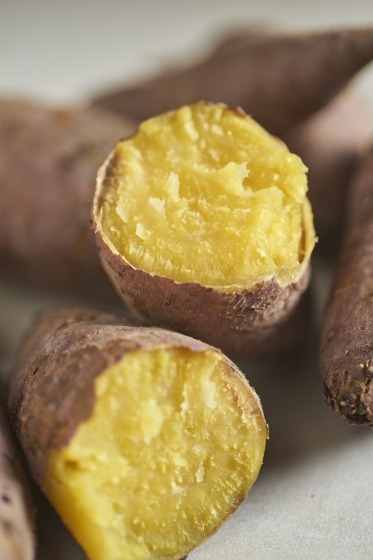
フィリピンで育った日本のさつまいも Japanese sweet potatoes grown in the Philippines(Photo: Green Heights Agricultural Corp.)
A Taste of Japan Cultivated in the Philippines
My father was in the business of dealing in U.S. military-released supplies in Okinawa in the 1970s when he met a Japanese man there named Mr. Chokushin Urasaki. Later, my father and Mr. Urasaki started Karaoke Pub Manila, the first karaoke in Manila. Mr. Urasaki also invested in Hakata Restaurant, one of the first Japanese restaurants in Manila. In the late 1970s, they started manufacturing satsuma-age (a Japanese fishcake). Around that time, my father started producing Japanese rice at his farm in Canlaon City, Negros Oriental.
Up to the present, we have been wholesaling two types of Japanese Rice which are Koshihikari and Sasanishiki produced at that same farm in Negros Oriental, Visayas under the “Mount Fuji Rice” brand, and satsuma-age produced at our factory in Makati under the “Kamaboko” brand in groceries and other businesses. Since our establishment, we have used Dalagang Bukid (yellowtail fusilier, a kind of white fish caught in the Philippines) for our satsuma-age fishcakes.
How Japanese Rice is Made
Initially, we had agricultural training support provided by Mr. Sotoo Furukawa, a technician from OISCA (a Japanese international NGO), and now, we use agricultural machinery bought in Japan. At the beginning of each workday, we diligently do Radio Taiso which is a simple Japanese exercise broadcasted on the radio every morning in Japan (at the farm, we use a recording).
Despite the difference in climate, we were able to perfect the same shine and stickiness of Japanese rice that is grown in Japan. The only difference we found with the Japanese rice we grow in the Philippines is the grain size, whereas ours is slightly smaller. Local yield per hectare here is also lower than in Japan.
Due to the unpredictable nature of Philippine weather, we have experienced many hardships. One of the more major natural disasters that affected us was the eruption of Mt. Kanlaon in Negros Occidental last December. It covered parts of the farm with volcanic ash and reduced our harvest, but every crop is a new beginning and we hope the next one will be better.
Discovering Beni Azuma
The Production of Sweet Potatoes Begin
In addition to Japanese rice and satsuma-age fishcake, we began producing Beni Azuma which is a type of Satsumaimo (Japanese Sweet Potato) in 2020. I encountered this in Ibaraki Prefecture and was so impressed by its deliciousness that I decided to try to produce it in the Philippines.
In the country, we also have our own variety of sweet potatoes called “kamote,” but Satsumaimo are sweeter and have a creamier texture. In Japan, there is a snack that can be comparable to our Kamote Cue which is “Daigaku Imo” that I think could become popular in the Philippines because of its complex taste and how it melts in your mouth.
Authenticity in Flavors
The Market for Japanese Food
The growing market for Japanese food in the country is not a surprise to me as they have always been popular, the only difference is that in the past, good authentic Japanese restaurants were on the pricier side. Now, there are a lot more options in the middle range which I think is great.
Our strength is that we produce Japanese rice and sweet potatoes within the Philippines, meaning we can offer them to our customers with optimum freshness and faster delivery time. As we grow, we will continue to understand the needs of our customers so that their dining experiences can be enhanced. We are also working to further spread our brand across the country and expand the Filipino’s curiosity for food.












